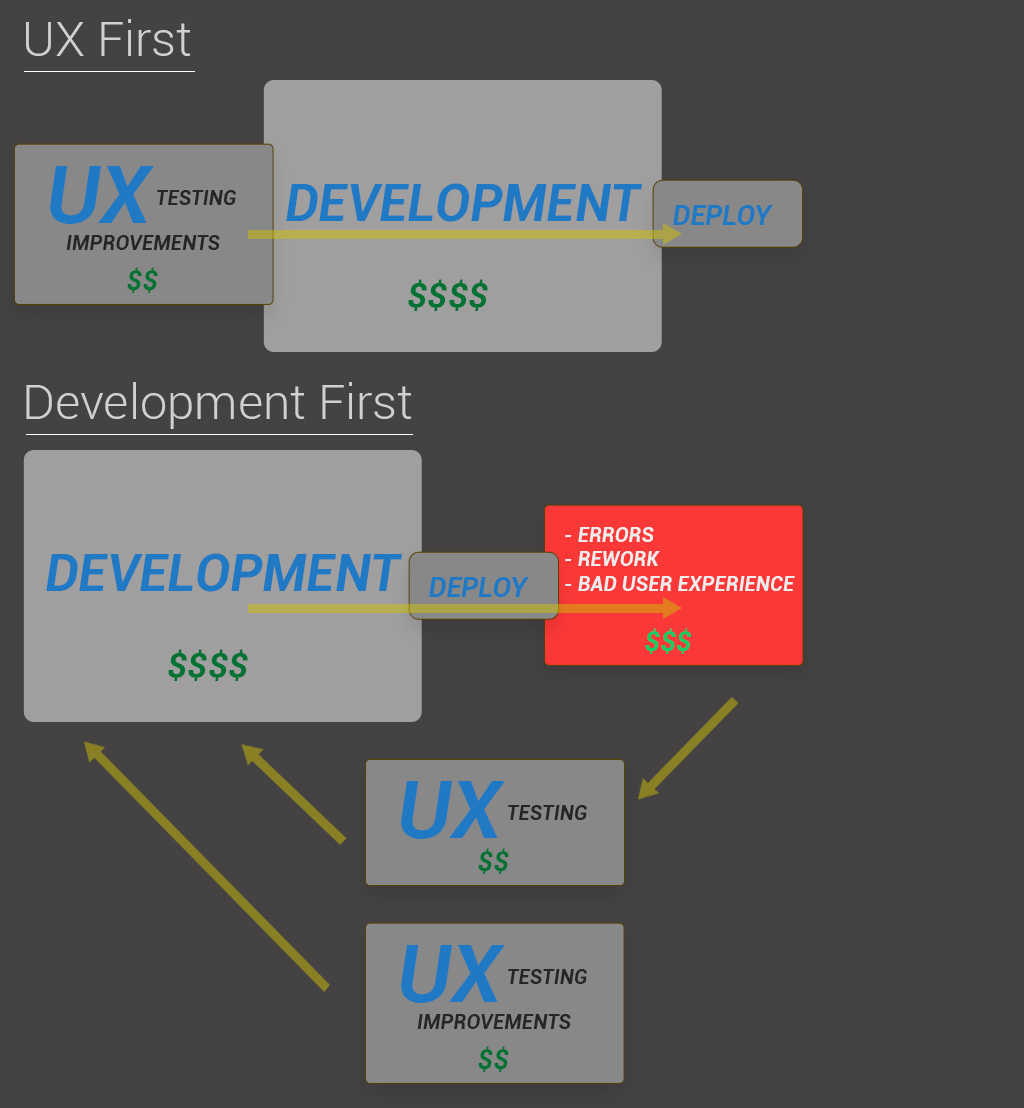Brand new idea. Great potential to make a difference in the market. What do you spend your money on up front? Technology developers to get it up and working, or an interaction design professional who can help determine how it will best be used and identify ambiguities?
The typical path I see being taken is on the side of tech. Get a mostly functional version 1 working and out the door and see what happens. Potential is high, adoption rate is decent, but you notice you’re getting complaints. Users complain about layout, process, and (gasp!) graphics? Finding out there are serious usability issues with a first launch is not uncommon. It leaves your early adopters with a feeling of being let down and now they’re more interested in what your next release will fix, instead of being excited about what new features you’ll bring. Until then, they’ll have to slog through what you gave them.
The most straightforward answer is that design should be first, and I don’t say that from a biased perspective.
Design can oftentimes drive technology.
It’s not enough to have your product “just work”. It has to be perceived in such a way that it works much better than others. This may have less to do with function and more to do with ease of use. A usability expert can identify simple things that often get overlooked like visual hierarchy and element contrasts (speaking digitally). These can be worked into all areas of the product before it goes live.
Skimping on hiring a design professional in the beginning may cost you more later.

Rework is costly. Even just determining how much rework is necessary and how to plan it within a typical release pipeline is a long process.
Do you have casual users with differing interaction habits? What about users with disabilities? Low or no vision? Taking inventory and retrofitting existing design to accommodate for these can be time consuming, thus adding to overall cost.
At the early stage of product development, you will need someone who can intelligently map out a user’s journey a lot more than you will need a PM to manage your developers.
Lastly, and most importantly,
A designer can get your product or application in users’ hands for feedback well before you need to build it.
By creating a clever approximation (what we call a prototype), a designer can mock up enough of your system that a someone can use it and get a feel for what you’re trying to accomplish. Very early on, this will answer so many questions like, does this actually solve your customer’s problem? Is it easy to use? Would they likely buy it?
You don’t need to have a fully functional or even partially functional application in order to validate it. Remember, users see and interact with screens and what they consider the final design. They don’t care what’s going on under the hood. So if in fact, nothing is going on under the hood and they’re just using a collection of designs to help you get some feedback, it won’t make a difference to them in any way. But for you, you will not have spent a dime on costly development yet.
Be prudent. Design is what makes things easy. Include it from the start.
